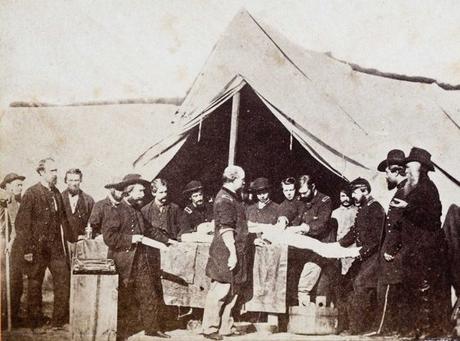
Criminal Mischief: The Art and Science of Crime Fiction Podcast: https://soundcloud.com/authorsontheair/limb-pits-and-germ-theory
Past Criminal Mischief Podcasts: http://www.dplylemd.com/criminal-mischief.html
Here in the 21st century we know a great deal about infectious diseases. We can treat bacterial infections with antibiotics, immunize people against numerous diseases, understand how viruses work, and have a huge fund of knowledge about surgical sterility and disease prevention. This was not always the case. In fact, in the history of medicine, all of this is fairly new.
During the 14th century, Europeans didn't understand infectious diseases so when the Bubonic Plague, also known as the Black Death, struck, they had no understanding of what was going on, how to prevent it, and, more importantly, how to treat it. They were at the mercy of a bacterium that currently is easily treatable. The Black Death killed between a third and a half of the population of Europe and dramatically altered the trajectory of world history.

The transition from ignorance to enlightenment concerning infectious processes was a long process and involved some of the giants of medicine. Names like Ignaz Semmelweis, John Snow, Louis Pasteur, Joseph Lister, and Robert Koch. The observations of these famous scientists were ultimately distilled into Robert Koch's famous Koch's Postulates, which proved the Germ Theory of disease. These postulates served as the foundation for our understanding of infectious diseases, and still do today. Simply put they say:

!-If an organism is causing a disease, it must be present in those who suffer from the disease and not in those who are healthy.
2-The suspected organism must be isolated from the diseased individual and grown in culture.
3-The cultured organism must then be given to a healthy individual and reproduce the disease.
4-The organism must then be isolated from this newly diseased individual and identified.
Each of these steps is necessary to show that a particular organism causes a particular disease and is transmissible from one person to another. Basically, this is how infectious diseases work.
Unfortunately, Koch's Postulates were not put forward until the 1880s, a couple of decades after the Civil War.
During the Civil War, almost any battlefield injury could lead to death, most often from a secondary wound infection. A gunshot to the leg, or arm, or really anywhere could become infected quite easily and this infection could spread through the entire body causing sepsis, which would ultimately lead to death. More soldiers died from infection than from their injuries. Surgeons at that time understood the danger of infections, even though they didn't know what caused it, and had no clue how to prevent or treat them. This meant that serious limb injuries were treated with amputation. Get rid of the injured limb and hopefully lessen the possibility of a secondary infection. Of course, post-surgical infections were also common and also lead to death.
Not only were sterile techniques and antibiotics unavailable at that time, but also any form of anesthesia was not to be found on most battlefields. Ether was around, having been first demonstrated by William T. G. Morton in 1846, but it's use and availability wasn't widespread. This means that a battlefield surgeon's best skill was speed. Sort of the surgical equivalent of "ripping off the Band-Aid." Any surgery was agony and the quicker it was done, and the sooner it was over, the better for the victim. And the amputated limbs piled up.
It seems that Virginia's Manassas National Battlefield Park has yielded what can only be called a "limb pit." It is a place where surgeons deposited removed limbs. This discovery underlines the state of surgical treatment and its brutal nature during the 1860s.
http://www.newser.com/story/260874/first-civil-war-limb-pit-is-excavated.htmlGerm Theory: https://en.wikipedia.org/wiki/Germ_theory_of_disease
Koch's Postulates: https://en.wikipedia.org/wiki/Koch%27s_postulates
Joseph Lister: https://en.wikipedia.org/wiki/Joseph_Lister
Ignaz Semmelseis: https://en.wikipedia.org/wiki/Ignaz_Semmelweis
John Snow: https://en.wikipedia.org/wiki/John_Snow
Louis Pasteur: https://en.wikipedia.org/wiki/Louis_Pasteur
William T.G. Morton: https://en.wikipedia.org/wiki/William_T._G._Morton
History of General Anesthesia: https://en.wikipedia.org/wiki/History_of_general_anesthesia
